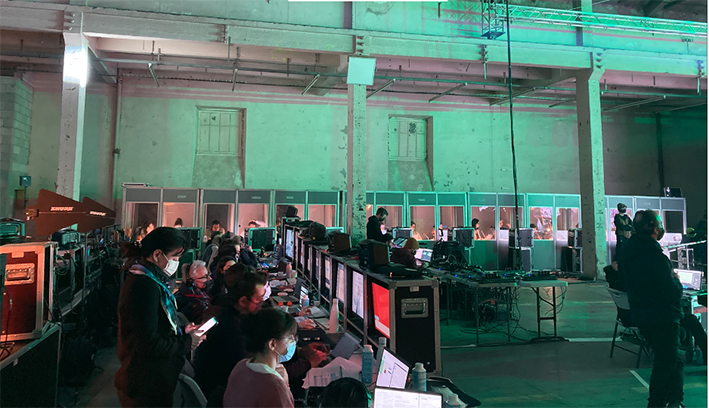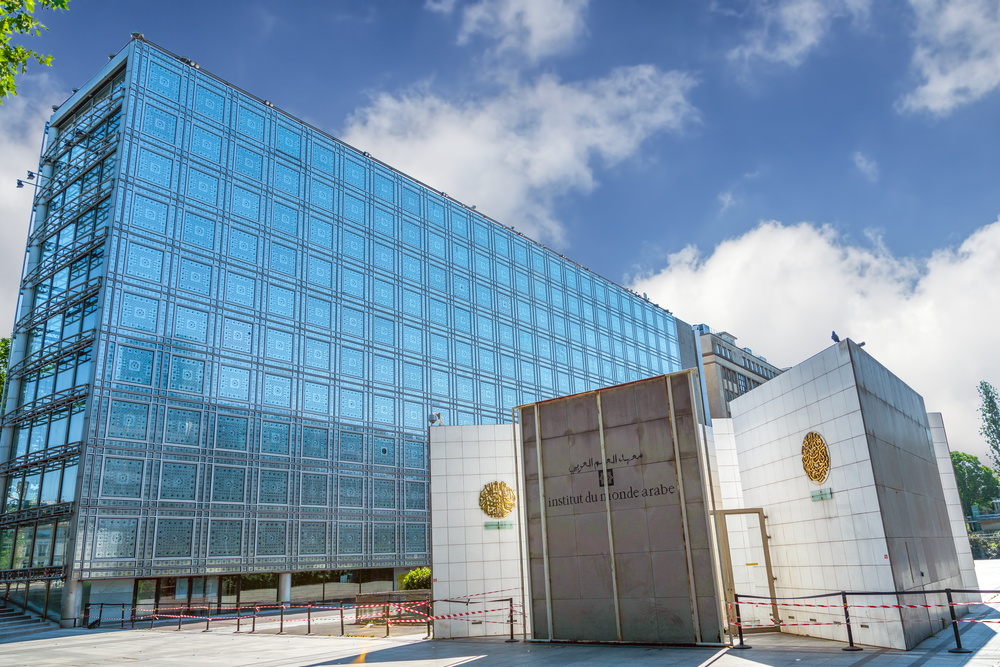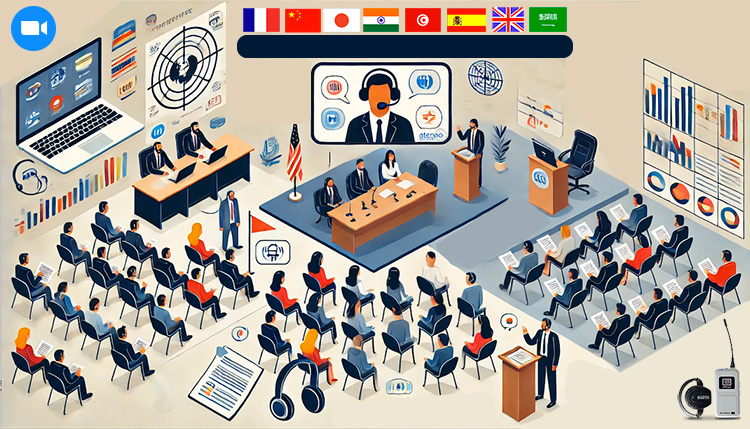Simultaneous interpretation is one of the most complex and fascinating skills in the field of translation and interpreting. It requires the interpreter to listen and render the message in another language almost at the same time, with only a few seconds’ delay. This real-time process is widely used in international conferences, political meetings, and high-level negotiations where every second counts.
Blog
Atenao & Wordly for Zoom: Professional Hybrid Interpretation, Smart Pricing
Until now, simultaneous interpretation meant heavy logistics: booths, consoles, headsets, technicians, and of course, experienced interpreters working in pairs. The result? Flawless quality… but at a high price, often hard to justify for webinars, trade fair stands, or multi-session conventions.
Liaison Interpreting: Definition, Contexts & Teaching
Liaison interpreting is one of the most practical and widely used forms of interpreting. Unlike simultaneous interpreting, which is common at international conferences, liaison interpreting is designed for direct, face-to-face communication. It is often used in business negotiations, medical consultations, legal settings, and community interactions, anywhere two people or small groups need to communicate but do not share a common language.
The court interpreter: a cornerstone of fair trials
The court interpreter plays an indispensable role in the proper functioning of the justice system. Their role goes far beyond translating words, they make sure everyone truly understands each other and that fundamental rights are respected. In a trial, even a small mistake in interpretation can change the meaning of a testimony, create confusion between the judge and the defendant, and even affect the final verdict. That’s why their work has to be precise, impartial, and highly professional.
Consecutive interpretation: giving voice to multilingual conversations
Consecutive interpretation, often called CI, is one of the best-known and most traditional forms of interpretation. The process is straightforward in theory: the interpreter listens to a section of speech, takes notes while following along, and then delivers the whole message in another language once the speaker pauses. In practice, though, it relies on a delicate balance of active listening, sharp analysis, memory, and clear delivery.
Professional Interpreter
Experts in spoken communication, a professional interpreter is a specialist in oral communication who work across both the public sphere (governments, ministries, institutions) and the private sector (companies, associations, and more). But interpreting involves much more than simply translating words. Interpreters must embody the speaker, conveying not only the message but also their tone, style, intent, and personality.
Becoming a Sworn Translator: A Real Commitment
A Sworn translator is regularly called upon by judicial authorities and government agencies to translate official documents. To become certified and work as a sworn translator, candidates must apply through the Ministry of Foreign Affairs, which selects applicants based on their experience and motivation.
11th edition of the World Arabic language day
As the fifth most spoken language in the world, the Arabic language is today the official language of 25 countries and is spoken by over 420 million people. Its role in international trade is becoming increasingly strategic as the Middle East’s global influence continues to grow.
Understand Interpreting Rates Before Your Event
Planning a multilingual event? Whether you’re hosting an international conference, a hybrid workshop, or an online meeting, getting a clear and customized interpretation quote is a crucial first step. This article walks you through what you need to know to receive a customized rate that fits your event—and your budget.
Getting a Translation Quote
As we mentioned in the previous article, every translation project needs a proper planning phase; this is what ultimately determines the quality of the final result. Today, we’re taking a closer look at what a translation quote is, what it includes, and why it matters. A quote is more than just a price tag, it outlines the cost of the service and helps ensure everything runs smoothly. Planning a multilingual project? Here’s what you need to know to get an accurate, reliable translation quote that aligns with your goals and expectations.















